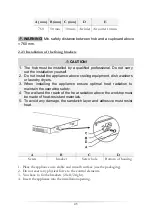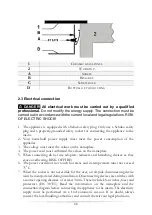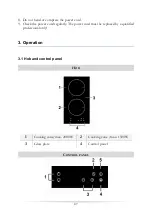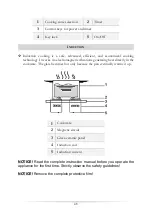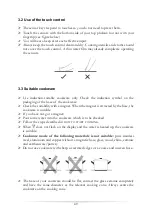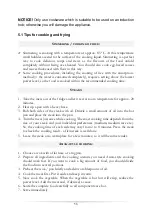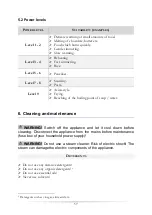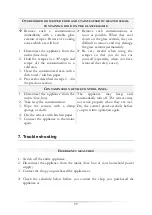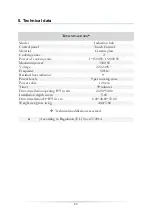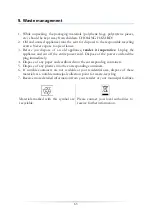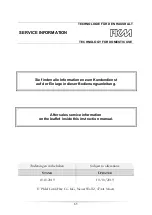
55
4. Environmental protection
S
AVING OF ENERGY
:
❖
Use proper cookware for cooking.
❖
Cookware with thick, flat bases can save up to1/3 of electric energy. Remember
to cover your cookware if possible; otherwise you will use four times as much
energy!
❖
Match the size of the cookware to the surface of the heating plate. A cookware
should never be smaller than a heating plate.
❖
Ensure that the heating plates and the cookware are clean.
❖
Soils prevent heat-transfer. Repeatedly burnt-on spillages can often be removed
by products, which will damage the environment, only.
❖
Do not uncover the cookware too often (a watched pot-content will never boil!).
❖
Decrease the power level as soon as the desired cooking temperature is reached.
❖
Use pot-lids to shorten cooking times and save energy.
❖
Minimize the amount of cooking liquids or fat/oil to shorten cooking times.
❖
Select a high-power level, when you start cooking. Reduce the power level, when
your food has been heated up.
❖
For long cooking times: Switch off the cooking zones 5 to 10 minutes before you
will finish cooking. This saves up to 20 % of energy.
❖
You can use the residual heat of the cooking zones for saving energy when
starting a new cooking procedure on a cooking zone which is still warm / hot.
❖
Do not install the appliance near of refrigerators / freezers. Otherwise the energy
consumption increases unnecessarily.
5. Cooking guidelines
WARNING!
Be very careful when frying, because oil and fat heat up
very fast especially when operating a high-power level. Extremely hot oil
and fat inflame spontaneously and represent a serious fire risk.
WARNING!
NEVER
try to extinguish a fire with water, but switch off
the appliance and then cover flame e.g. with a lid or a fire blanket.
Caution!
Cooking utensils may become hot because of the heat
transferred by the heated food. Potholders or oven gloves may be needed
to handle such utensils.





